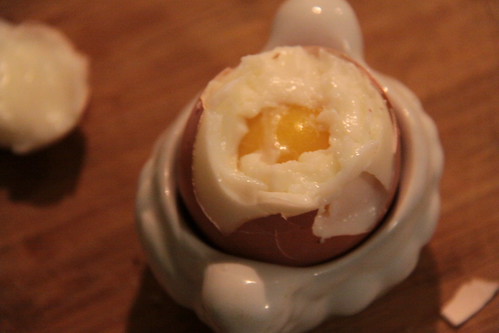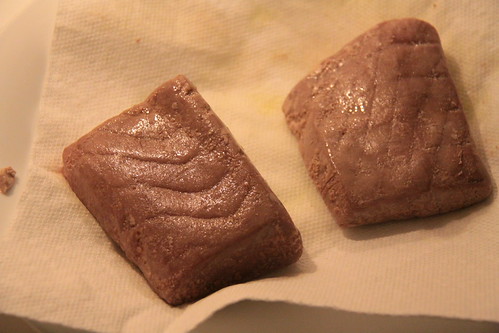My interest in Sous Vide was all the fault of Herve This (ThEEs).
Dr. This is a mad scientist. He dedicates his studies to understanding food and cooking and coined the term `Molecular Gastronomy` (based on work he had done with Nicholas Kurti). He was the first person in the world to obtain a PhD in molecular gastronomy.

His field of study is often confused with a style of cuisine which stole the title to describe cooking with tools of science (such as mysterious powders and processes). The focus of his art is to understand what happens to our food as we cook it and learning how we can modify our approaches. He teamed up with Farran Adria, Heston Blumenthal, Thomas Keller and Harold McGee to create a mission statement for their approach to food and technique that could form the mission statement of almost any cook – professional or pedestrian (we wrote about his super cool project here).
Thes challenges age-old techniques to determine the best way to approach cooking. He discovered that one set of egg white proteins solidify at 142°F, the yolk starts to solidify at 158°F and a final set of egg whites solidify at 184°F. He determined that the optimal temperature for cooking an egg is precisely 149°F for as long as you want. As long as the temperature the egg is being cooked in is stable, you cannot overcook it (after all it can`t get hotter than the temperature it is cooked within).
Thes uses a precise oven to cook `soft boiled eggs.` If you are interested in his writing, Google Books has an almost complete version of Kitchen Mysteries (we wrote how to access this and others online for free, legally, here). There is also a great review of his egg science in Discover Magazine which reviews eggs he cooked at 140°F (60°C), 153°F (67°C) and 70°F (158°C) . You can find that article here.
Thes also proved that you can overcook a hard boiled egg. There are two consequences to this crime: the yolk will be off center and the proteins of the egg (which naturally contain sulfur atoms) will release a gas (dihydrogen sulfide) which creates a foul smell and reacts with iron ions in the egg and creates a greenish rim around the outside of the yolk.
All of that is a very long introduction to our migration towards the Sous Vide Egg. Our experiences as Sous Vide `chefs` was off to a rocky start – in the terms of traffic lights we had found a yellow light (the pork belly) and a red light (the tuna). Sous Vide was proving to be interesting but challenging to the palate (yet remarkably easy to do). We were in need of a hit.
We had two options – soft cooked and hard-cooked in shell. Soft cooked would yield a soft yolk and white while hard-cooked would cook both parts to a tender firmness. The SousVide Supreme recommended soft cooked to be done at 147°F (64°C) while hard-cooked asked for 160°F (71°C) – both for 45 minutes. Simply set the temperature, wait for the water to come to temperature and drop the whole eggs in the water.

The soft cooked egg was unlike any we had eaten before. The entire thing was soft – which is, of course, entirely different from runny. The whites were cooked through but had the texture of jelly. It was tough to peel the shell back without them spilling over. It reminded me of discovering surface tension as a child when you filled the glass just over the rim. With each prod of a fork I expected the entire soft egg to spring a leak and drain on to my plate. I have left the photos in Toronto (I am in San Diego) and will update this post by next Friday morning to include photos of them.
Soft cooked eggs were good – but an acquired texture. With time I could see that I could be converted to these possibly being the best eggs I ever ate. Another yellow light – it was getting late in our experiments to find a big win.
The hard-cooked eggs went in. These were the best eggs I ever ate in my life. Delicate, soft, yet cooked through The yolk became a moist golden nugget of pure happiness. The whites were tender and moist and beyond tasty.



I am not a breakfast person – these eggs would change that. They were everything I looked for in an egg – and never knew I wanted. If you own a small brunch shop, you really must consider an investment in this type of thing – you could own the hard-cooked egg in an entire city; just make sure we get an invite!
We finally found our success! I am sure there would have been many more with more time to experiment (and more knowledge). I`ll wrap up our final thoughts on the experiment tomorrow.
















